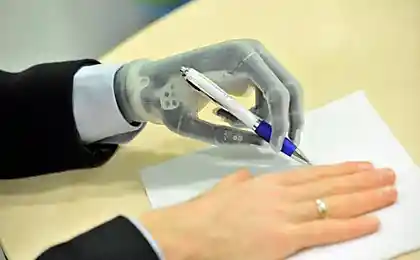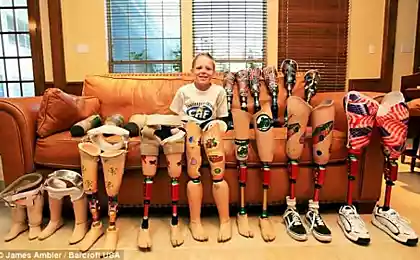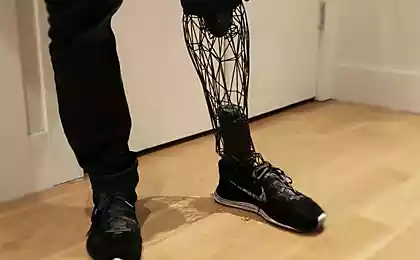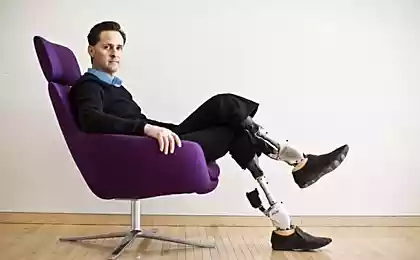539
Scientists have developed a new method of prosthetics of teeth
Scientists have developed a new method of prosthetics of teeth with bioconstruction material, formed from their own cells the gums of the person. Modern methods based on implants, failed to reproduce a natural root structure and as a result of the friction from eating and other jaw movements around the implant may occur damage of the jawbone.
The study was led by Professor Paul Sharpe, expert in craniofacial development and stem cells at the Royal College of London. The document was published in the Journal of Dental Research.
The study aimed at achieving the goal – the production of bioengineered teeth (bitubo) – mainly focused on education rudiments of teeth (teeth primordia) that mimic those in the embryo, which in the form of a bunch of cells can be transplanted into the adult jaw to develop into functional teeth.
Eighty nine million forty six thousand four hundred five
It is noteworthy that despite the very different environments, the rudiments of the teeth of the embryo are able to develop normally in the mouth of an adult. Thus, if they identified a suitable cell, which can be combined in a similar way to the production of immature teeth, it will be a realistic prospect of becoming Usubov in clinical practice.
Subsequent studies have focused primarily on the use of the cells of the embryo. Although it is clear that germ cells are capable of the rudiments of teeth easy to form immature teeth, accompanied by a division into lot of single cells and the subsequent recombination, such cell sources is not feasible in General medicine.
Professor Sharpe says: ”What we need is the identification of sources of epithelial and mesenchymal cells in the adult human, which can be obtained in sufficient quantity, to make education Usubov a viable alternative to dental implants”.
In this new work, the researchers isolated the gingival tissue of patients in the Dental Institute, king's College London, raised in the lab her more, and then combined with mouse cells, forming teeth. By transplantation of the combination cells to mice, the researchers managed to grow hybrid human-mouse teeth containing dentine (hard tissue), enamel, as well as viable roots.
Professor Sharpe concludes: ”Epithelial cells derived from the tissues of the gums of an adult, able to respond to stimulating signals from the teeth of the dental mesenchyme of the embryo in an appropriate way, in order to facilitate the formation of the crown and root of the tooth and to give impetus to the development of differentiated types of cells, accompanied by cell culture in vitro.
Consequently, these easily accessible epithelial cells can be considered as a realistic source in education Usubov person. Our next important task is to identify a method of growing mesenchymal adult cells, which would stimulate the teeth, because at the moment we can get to do this only in mesenchymal cells of the embryo”.
Source: /users/104
The study was led by Professor Paul Sharpe, expert in craniofacial development and stem cells at the Royal College of London. The document was published in the Journal of Dental Research.
The study aimed at achieving the goal – the production of bioengineered teeth (bitubo) – mainly focused on education rudiments of teeth (teeth primordia) that mimic those in the embryo, which in the form of a bunch of cells can be transplanted into the adult jaw to develop into functional teeth.
Eighty nine million forty six thousand four hundred five
It is noteworthy that despite the very different environments, the rudiments of the teeth of the embryo are able to develop normally in the mouth of an adult. Thus, if they identified a suitable cell, which can be combined in a similar way to the production of immature teeth, it will be a realistic prospect of becoming Usubov in clinical practice.
Subsequent studies have focused primarily on the use of the cells of the embryo. Although it is clear that germ cells are capable of the rudiments of teeth easy to form immature teeth, accompanied by a division into lot of single cells and the subsequent recombination, such cell sources is not feasible in General medicine.
Professor Sharpe says: ”What we need is the identification of sources of epithelial and mesenchymal cells in the adult human, which can be obtained in sufficient quantity, to make education Usubov a viable alternative to dental implants”.
In this new work, the researchers isolated the gingival tissue of patients in the Dental Institute, king's College London, raised in the lab her more, and then combined with mouse cells, forming teeth. By transplantation of the combination cells to mice, the researchers managed to grow hybrid human-mouse teeth containing dentine (hard tissue), enamel, as well as viable roots.
Professor Sharpe concludes: ”Epithelial cells derived from the tissues of the gums of an adult, able to respond to stimulating signals from the teeth of the dental mesenchyme of the embryo in an appropriate way, in order to facilitate the formation of the crown and root of the tooth and to give impetus to the development of differentiated types of cells, accompanied by cell culture in vitro.
Consequently, these easily accessible epithelial cells can be considered as a realistic source in education Usubov person. Our next important task is to identify a method of growing mesenchymal adult cells, which would stimulate the teeth, because at the moment we can get to do this only in mesenchymal cells of the embryo”.
Source: /users/104























